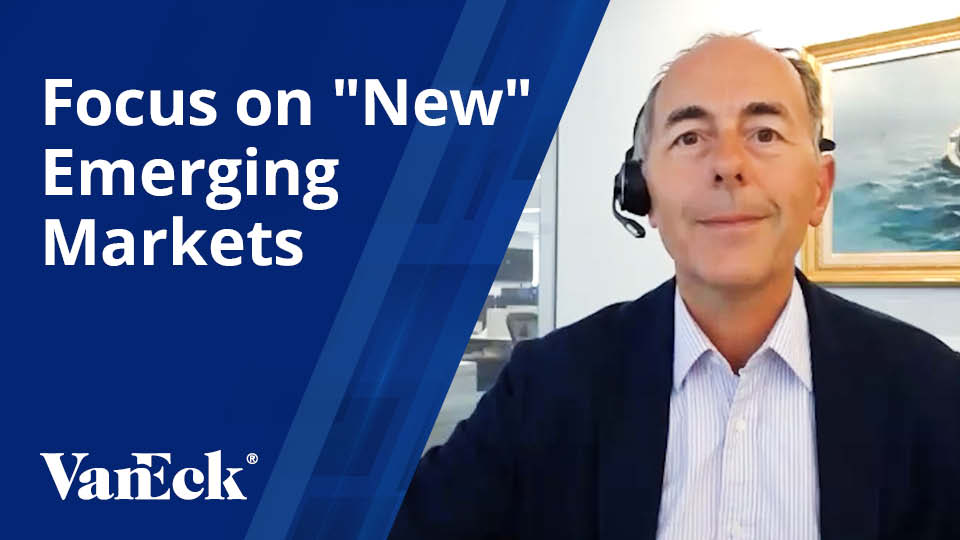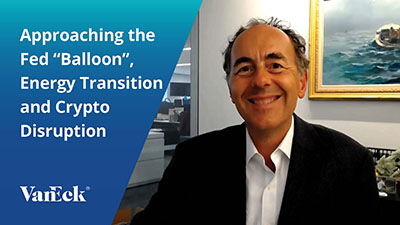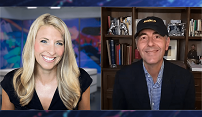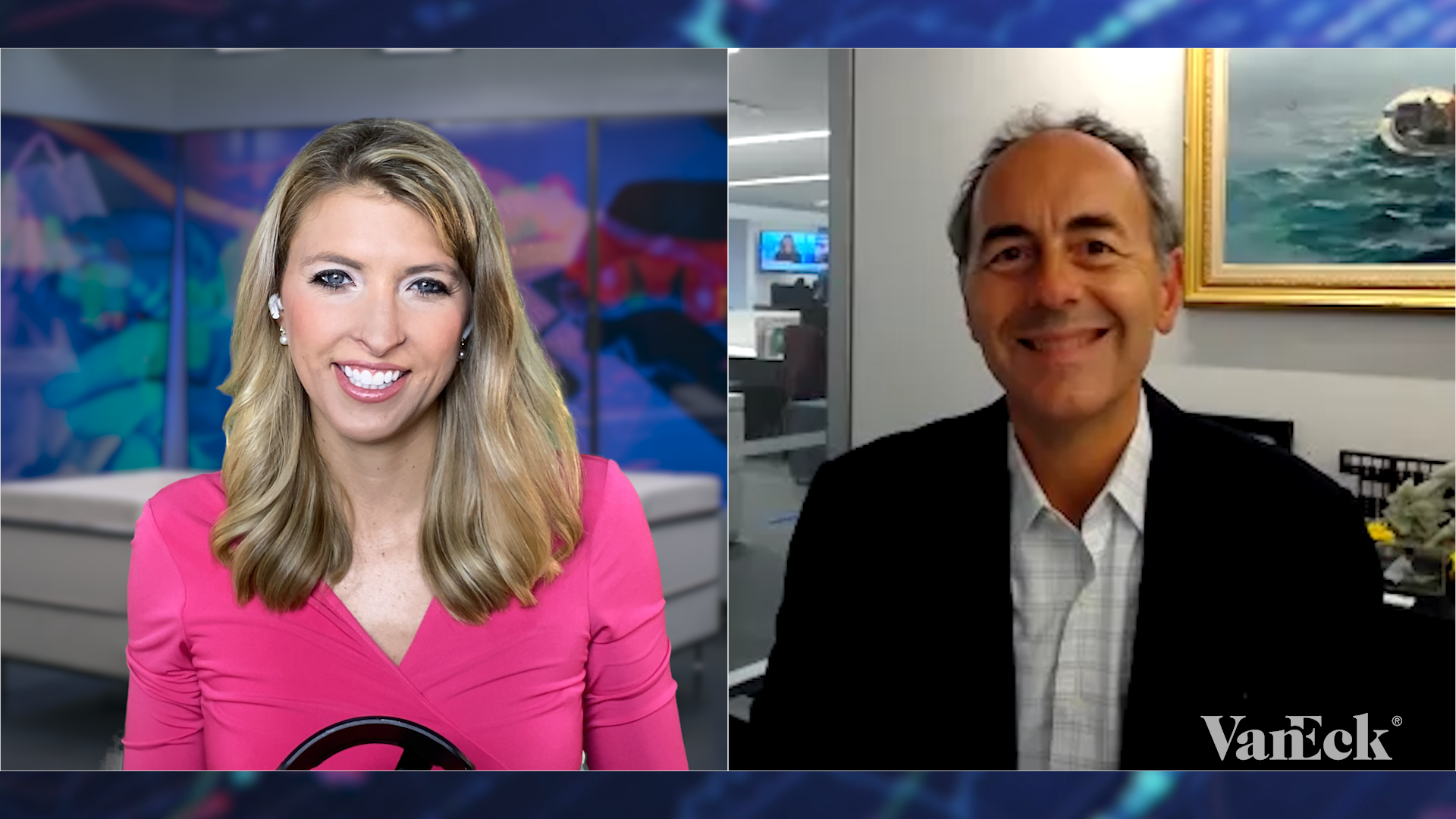Q2 2018 Investment Outlook: Commodities Seizing Their Moment
18 May 2018
Watch Time 4:47
Q2 2018 Investment Outlook: Commodities Seizing Their Moment
NATALIA GURUSHINA: Welcome, I’m Natalia Gurushina, Chief Emerging Markets Economist at VanEck. With global rates normalizing, geopolitics still posing major risks, and with one of the longest bull runs in U.S. stocks apparently stalling, 2018 might be a year of paradigm shift. I am here today with VanEck CEO, Jan van Eck, to discuss his outlook, macroeconomic outlook, and also to talk about his views on the most appealing opportunities in this challenging environment. So let me ask you a very simple question first: Is there still an investment case for real assets, including commodities?
JAN VAN ECK: Good to be here, Natalia. Yes, and thanks for asking about commodities first because what we said coming into this year is we thought commodities could be the best performing asset class. Really it’s a very clear picture to us what’s happening. Since the end of 2015, supply has been constrained, and successively first, precious metals companies were forced to restructure and focus on shareholder returns and shareholder equity. Then the same thing happened in the base metals area, and you saw good rallies in both.
Now you see this great set up in the beginning of 2018 where oil prices have continued to march towards $80 a barrel, but energy stocks have really lagged behind. You’re talking about sort of a multi-decade dispersion between the two. So that’s one of the most exciting trades that I see right now, looking forward for the next 12 months or so. Looking at real assets as a whole, I think you also have to look at the backdrop of rising rates and look out for what people have in their portfolios, like real estate, that have a high sensitivity to a higher interest rate environment.
GURUSHINA: Well, since you’ve mentioned it, it might be a good idea to talk about your thoughts about the interest rate environment. Because the policy accommodation withdrawal by major central banks is already underway, so do you still expect interest rates, especially rates in the U.S. to go up by the end of the year, and also what about Europe, because Europe was kind of lagging behind the U.S. in this regard?
VAN ECK: In the beginning of the year, we said that the 10-year we thought could reach 3.5% in 2018. That was a very out-of-consensus view at the time. We still think that can hold, although it’s a little uncomfortable because Wall Street has now joined us and they’re looking at 3%-4%. It’s uncomfortable agreeing with lots of other people, but that’s where we are right now. Let’s just quickly review why. What’s the other view? The other view is we’re in a 35 year bull market for bonds, and that really hasn’t ended. And sure, rates have gone up a little bit in the short term. The reason for that is this big debt overhang. The reason we just don’t think that’s right is a couple things that have happened. First of all in 2018, labor markets have tightened, number one.
Number two, the higher fiscal deficit picture because of the tax law, so that has raised this issue. It projects into 2019 as well. If we’re running big deficits, meaning the government has to sell bonds, well, bond prices might go down and yields might go up, so that’s number two.
Number three is I think that the Fed has a lot of confidence now in the continuing normalization. They started, the monetary base flattened out two years ago, and they have been raising rates and transmitting that, so why not continue? I think this Fed is very comfortable continuing that. You know, on the other side, everyone is saying, “Well, rates should correct or the yield curve’s flattening and that’s going to portend a recession.” And yes, there’s been a lot of chatter about that. But really despite positioning, rates have really stayed up there pretty high without a big correction so far this year. So that’s still our base case.
GURUSHINA: Since you mentioned the recession, I think when we talk about global growth, there is something else interesting happening right now. Mainly it looks like there is a discrepancy, rising discrepancy between growth outlook in the U.S. and Europe. From your point of view, what does it mean for investment opportunities?
VAN ECK: Well, we said going into the year that Europe was the place to watch, because the ECB is taking away the punchbowl in normalizing their monetary policy. There’s some really weak sisters in Europe that we needed to worry about. I think probably we should have mentioned as well is the U.S. tax plan, by lowering corporate rates to 20% or so really is not good for Europe either. So on the margin it’s going to dampen growth a little bit in Europe, I would expect, in the first half as businesses just move their business activity around a little bit, so it’s something to watch. You know, we’re not calling for a major risk; it’s just something to watch. So that’s the category I’d put it into. Not actionable, but definitely leave it on the research agenda.
GURUSHINA: But let’s think about maybe more actionable items in terms of growth, because it’s clear that at least there are now some signs on growth inflection, maybe not globally, but at least in some parts of the world. Global rates are going up. So what does it mean for emerging markets?
VAN ECK: I think about equity and debt very differently. On the debt side, especially now there’s some pressure on EM debt, what we’ve basically said is if interest rates are going up, you want some kind of credit risk, either high yield or EM. So we like the asset class, maybe short term there are some pressures. On the equity side, you know, earnings are still good. Cash flow growth is good. And ultimately that drives equity markets. Also the currency exposure is much more tilted to Asia. It’s almost 80% Asia—that’s a very, very different currency profile. So we’re still pretty enthusiastic about emerging market equities.
GURUSHINA: Thank you very much, Jan. Thanks for sharing your insights. And thank you very much for tuning in. For more insights from VanEck specialists, please go to








